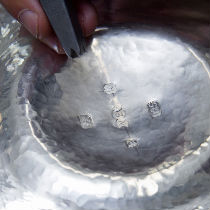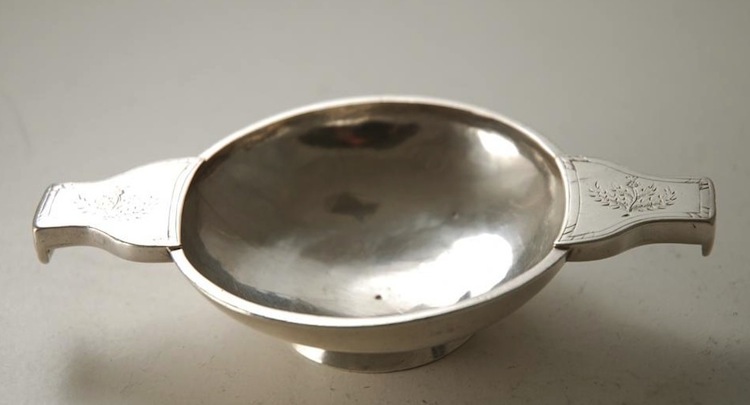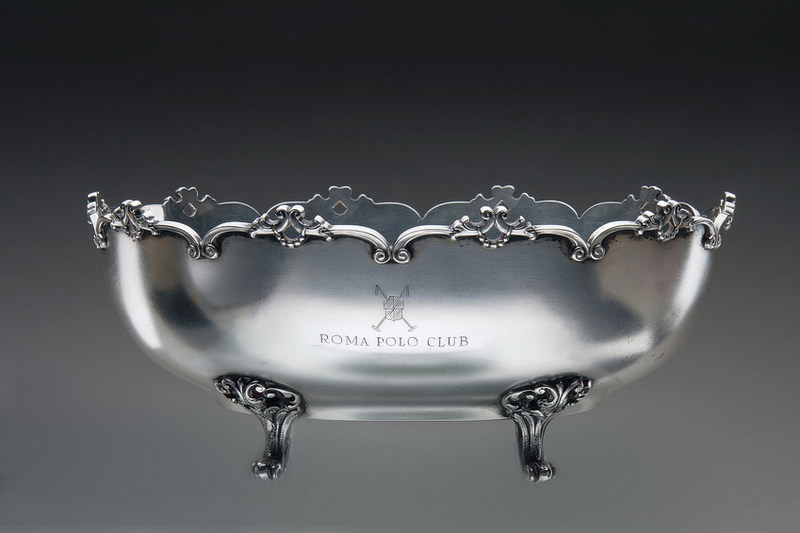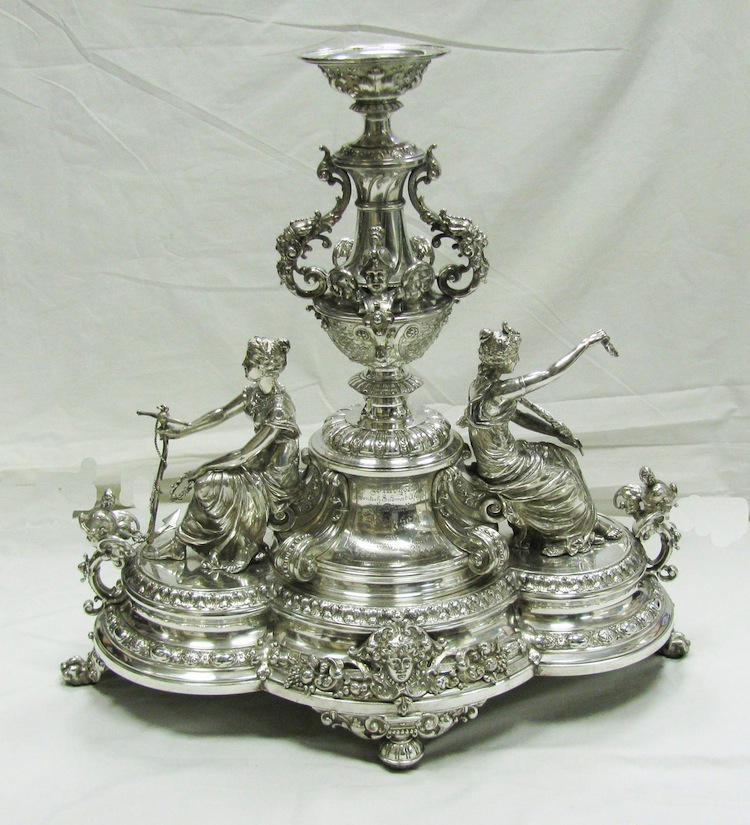DATE LETTERS
The date letter system was introduced in London in 1478 (elsewhere as the hallmarking system evolved). Its purpose was to establish when a piece was presented for assay or testing of the silver content. The mark letter changed annually in May, the cycles of date letters were usually in strings of 20 and each cycle was differentiated by a changing of the font, letter case and shield shape.
DUTY MARKS
In 1784 the duty mark was created to show that a tax on the item had been paid to the crown. The mark used was a profile portrait of the current reigning monarch’s head. The use of this mark was abolished in 1890.

1. 1785 (began 12/1/1784)
2. 1786 – 1821
3. 1822 – 1833
4. 1834 – 1837
5. 1838 – 1890
The first two marks are not duty marks but were used prior to them and dropped when the duty mark came into existence. The crowned leopard (a) was used with Sterling, the lion in profile (b) was used with Britannia.
MAKER’S MARKS
The enforced use of the maker’s mark was instituted in London in 1363. Its purpose was to prevent the forgery of leopard’s head marks upon silver of debased content. Originally, makers’ marks were pictograms, but by the beginning of the 17th Century it had become common practice to use the maker’s initials.
MORE INFORMATION
The British Hallmarking Council
St. Philip’s House
St. Philip’s Place
Birmingham B3 2PP
Telephone 0121 200 3300
![]() THE BRITISH HALLMARKING COUNCIL
THE BRITISH HALLMARKING COUNCIL
![]() Hallmarks on Gold, Silver and Platinum (2.56mb)
Hallmarks on Gold, Silver and Platinum (2.56mb)
![]() A Retailers Guide to European Hallmarks (2.95mb)
A Retailers Guide to European Hallmarks (2.95mb)
![]() New Hallmarks: A consumer guide (2.05mb
New Hallmarks: A consumer guide (2.05mb











